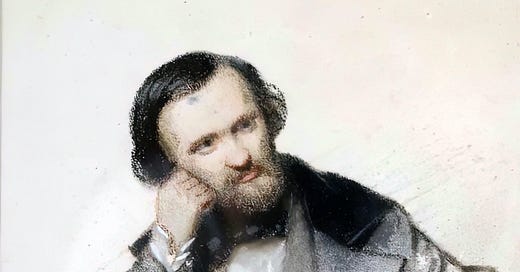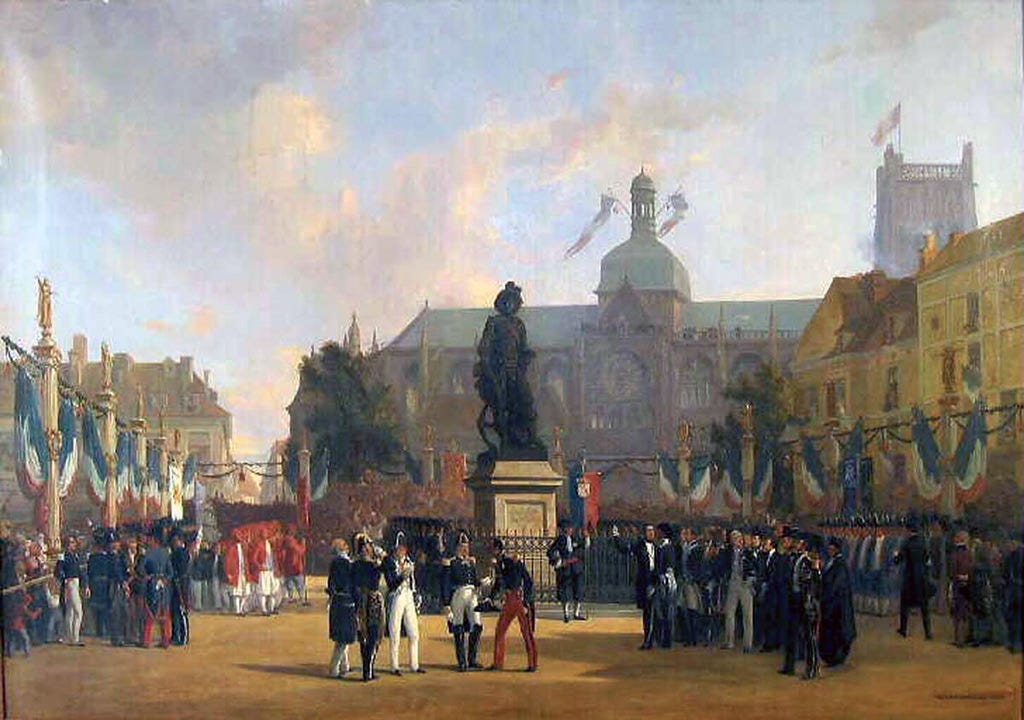Jacques Guiaud, a French artist primarily known for his landscape and cityscape paintings, was a notable figure in the 19th-century art world. Born in 1811 in Chambéry (and died in 1876), which was then part of the Kingdom of Sardinia and is now in France, Guiaud's artistic journey reflects the vibrant and evolving art scene of his time.
Guiaud's early life and training are somewhat obscure, but it is known that he moved to Paris to pursue his artistic career. In Paris, he became part of a thriving artistic community and was exposed to various influences that shaped his style. The mid-19th century was a period of significant change in European art, with the Romantic movement giving way to Realism and the early stirrings of Impressionism. Guiaud's work, however, primarily remained rooted in the traditions of landscape and cityscape painting.
One of the distinctive features of Guiaud's art is his meticulous attention to detail and his commitment to realism. His landscapes and cityscapes are not just mere representations of places; they capture the essence and atmosphere of the locations. He had a particular talent for depicting architectural elements and urban scenes, often imbuing them with a sense of liveliness and movement that was characteristic of the bustling 19th-century European cities.
Guiaud was also known for his watercolors, a medium that was gaining popularity during his time. Watercolor allowed for a degree of spontaneity and lightness, and Guiaud exploited these qualities to capture fleeting moments and changing light conditions in his scenes. This approach shows a subtle alignment with the Impressionist movement, which was gaining momentum during his lifetime, although Guiaud's style remained distinct from the Impressionists' more radical departures from traditional techniques.
Throughout his career, Guiaud exhibited his works at various salons and exhibitions, which were the primary venues for artists to gain recognition and sell their works during that era. His participation in these events indicates that he was an active and recognized member of the artistic community.
Despite his contributions, Jacques Guiaud is not as widely remembered as some of his contemporaries. This relative obscurity could be due to several factors, including the sheer number of talented artists working during this period and the dramatic shifts in artistic styles that occurred. Artists who did not align closely with the major movements of their time, such as Romanticism, Realism, or Impressionism, often found their work overshadowed by those who did.
In summary, Jacques Guiaud was a skilled landscape and cityscape painter whose work reflects the artistic trends and techniques of 19th-century France. His detailed and realistic portrayals of urban and rural scenes capture the spirit of his era, and his proficiency in watercolor highlights his versatility as an artist. While not as celebrated as some of his peers, his contributions provide valuable insights into the art and culture of his time.
NOTE: Abraham Duquesne, marquis du Bouchet (c. 1610 – 2 February 1688) was a French naval officer, who also saw service as an admiral in the Swedish navy. He was born in Dieppe in 1610, and was a Huguenot. He was the son of a naval officer and therefore became a sailor himself, spending his early years in merchant service.
This was the only painting we could find that Guiaud made in Dieppe.





